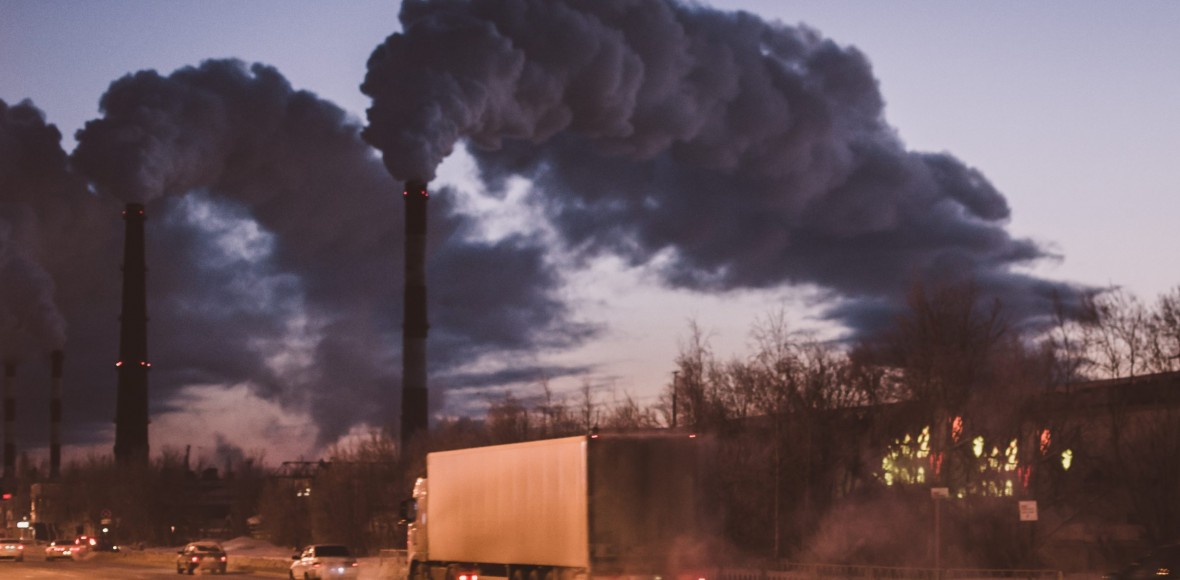Hospitals & Air Pollution, Part 1
Published
How Hospitals Can Protect Patients from PM 2.5 Air Pollution
Masked bicyclists, haze-obscured skyscrapers, raging wildfires, furious dust storms — the images of extreme air pollution are becoming increasingly familiar, as are the health alerts that drive residents indoors.
But hazardous air is not just a periodic or outdoor threat; pollution is a continuous health crisis worldwide, and building interiors, including hospitals, are no safe haven from airborne toxins.
Global health authorities are particularly concerned about PM2.5, particulate matter that is smaller than 2.5 microns — about 1 ten-thousandth of an inch or, at most, 30 times smaller than the width of a human hair — and therefore able to penetrate lung tissue and enter the bloodstream.
Generated by vehicles, factories, forest fires, fossil-fuel burning, and a range of chemical reactions, PM2.5 is considered the most sensitive marker of air pollution and causes over 4.2 million premature deaths each year.
If PM2.5 remained outdoors, this microscopic mixture of dust, soot, metals, and chemicals would be harmful enough. After all, the particles can travel hundreds of miles and trigger asthma, bronchitis, pneumonia, and heart attacks. Hospital admissions for these and other conditions surge on days with high PM2.5 levels.
Yet admission to a hospital for pollution-triggered conditions can be like seeking refuge from a rainstorm in a leaky tent, “negating the purpose of the visit,” as scientists at the American University of Beirut have observed.
Hospitals are by no means hermetically sealed. Doors and windows open and close, people come and go, and air currents propel PM2.5 indoors — throughout lobbies, down hospital corridors, and into emergency departments, intensive care units, and patient rooms.
Research confirms a “high correlation” between PM2.5 concentrations outdoor and inside hospitals. At times, studies show, indoor PM2.5 levels actually exceed outdoor levels, findings with significant implications for patients.
“Since people spend most of their times indoors, the effect of indoor air quality on health is invariably more pronounced than outdoor air,” note the Lebanese scientists, adding that hospital patients are “highly vulnerable” to the health risks of air pollutants.
Air quality inside hospitals, the scientists concluded, is therefore “more critical to its occupants” than air quality in other types of buildings.
Hospitals, of course, cannot control wildfires, vehicle emissions, or other sources of PM2.5. They can, however, deploy technology that continually eradicates the toxic particles wafting about their facilities.
How PM2.5 Damages Human Health
Just as PM2.5 devastates the natural environment — turning lakes and streams acidic, depleting soil nutrients, damaging forests — these toxic particles wreak all kinds of havoc on the human body, inflaming arteries, injuring eye tissue, even compromising muscular strength.
PM2.5 plays a “very significant role” in a wide array of medical conditions, including hypertension, cardiac arrest, cardiovascular disease, and chronic obstructive pulmonary disease (COPD), according to the World Health Organization (WHO). Chinese scientists call PM2.5 “a major issue that threatens public health.”
Among the wealth of PM2.5 studies on human populations, what’s striking is the link to damage at every stage of life: in utero, in youth, in middle age, and during the senior years.
For example, exposure to PM2.5 within four weeks of conception appears to increase a woman’s odds of miscarriage substantially, by 15% per 10 μg/m3 increase in PM2.5 concentration, a Chinese study found.
Pollutants appear to penetrate the placenta, leading to “irreversible damage to the dividing cells of the foetus,” wrote the Chinese team, based at Tianjin Medical University General Hospital.
Other studies connect prenatal PM2.5 exposure among women to low birth weight, preterm birth, and stillbirth.
PM2.5 exposure may even compromise sperm quality, according to other Chinese scientists. “PM2.5 exposure can cause male reproductive toxicity, leading to associated adverse pregnancy outcomes,” a team from Zhejiang Province concluded.
Young children, too, appear to be vulnerable to the effects of PM2.5, for many of the same reasons they are more susceptible to the harms of VOCs (volatile organic compounds) and mould spores: Compared to adults, children have weaker immune systems, developing organs, an increased resting metabolism, and increased oxygen demand and respiratory rates.
What’s more, children have narrower airways than adults, so pollutants such as PM2.5 that may cause mild irritation in adult airways “can cause a more substantial obstruction in children,” noted scientists at the University of Nottingham in the United Kingdom.
Read part two of How Hospitals Can Protect Patients from Air Pollution.
